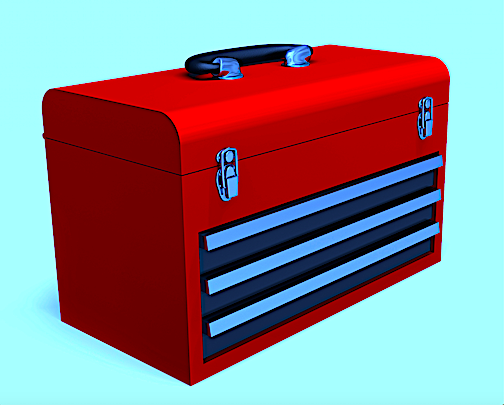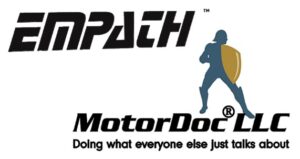In last week’s article (Aug. 7, 2020), we discussed elements involved in building a plan for implementation of precision maintenance at a site, including the selection of candidate equipment/machines for improvement and metrics. This week, the focus is on tools. Note, however, that no specialty or unique tools are needed for precision maintenance. All the required tools are commonly available and relatively inexpensive. Acquiring a good set of tools demonstrates the importance of precision maintenance and sends a clear message that we are serious about this work.
Three categories of tools are required: machine-performance-measuring tools, measurement tools, and general types of assembly tools
1. Machine-performance-measuring tools. Such tools are essential to sustaining the cultural shift necessary with precision maintenance. Daniel Pink, in his 2009 book Drive, listed three elements of the motivation formula: autonomy, mastery, and purpose. Measuring before and after machine performance helps technicians develop that important sense of mastery.
Let’s take vibration as an example. Vibration is a good indicator of machine condition and so having technicians take before and after vibration readings is a good way to measure performance improvement and generate that sense of pride in the job. Simple overall vibration meters are available from a variety of outlets and are relatively inexpensive. I recommend those that use a magnetically-mounted accelerometer for ease of use and repeatability.
Temperature is another good indicator of machine condition. Spot radiometers (temperature guns) are ubiquitous these days but make sure the users understand the limitations of emissivity and spot size. A strobe light is an invaluable tool for machine inspection and should be part of the kit.
2. Measurement tools. Ensuring that parts fit together properly is a big part of precision maintenance. In almost every job, there are numerous times where fits need to be checked. A set of good-quality micrometers is a must. A set of 0-4” (0-100mm) outside micrometers will handle most jobs. If unmounted bearings are being installed, then you will need an accuracy of 0.0001 inches (or 0.002 mm). I would also recommend having a 0-1” (0-25mm) micrometer in every laser alignment kit to measure shims. An inside-micrometer and a set of telescoping gauges are required for measuring bores and housings. Other recommended measurement tools include depth micrometers, thickness (feeler) gauges, radius gauges, a precision machinist’s level, and two dial indicators with magnetic bases.
3. Assembly tools. A torque wrench is one of the most important assembly tools that’s needed. I would recommend that each technician be issued with one and they should be in daily use. A 1/2” drive up to 250 ft-lbs. (350 Nm) will cover most fasteners up to 3/4” (20mm). Consider getting a digital wrench. These items are much more repeatable than the common click type (and, today, can compete in price with good-quality click-type wrenches).
Misalignment is one of the most common machinery failures, so appropriate alignment tools should be available. A good-quality set of reverse dial indicator brackets a laser tools are recommended. There is a huge range of laser tools on the market today, ranging from fairly inexpensive tablet-based to highly complex systems costing upwards of $30,000. Make sure you get a system that is appropriate to your needs. Many facilities have invested in top-of-the-line systems with all the bells and whistles, but have rarely used or even understand all the advanced features and capabilities of those systems. For simple horizontal shaft alignment, less-expensive systems work fine. Moreover, their price point means that multiple sets can be made available for the price of one larger system.
Regarding alignment systems, don’t ignore your belt drives. There are many belt-alignment laser systems on the market, all of which work and make aligning V- belts and synchronous belts easy. My personal preference is for the 2-beam type that mounts on the end of the pulleys. This type is designed for use without adapter brackets on both V- and synchronous-belt drives. The 2-beam arrangement allows a bit more flexibility in the application of the tool. A set of V-belt groove gauges is a must to measure pulley wear, along with a belt tension gauge. While several electronic types are available, be careful with those that use a microphone to measure the frequency of the vibration, as they can be susceptible to background noise. The contact-probe and optical types are more reliable. Of course, the spring-loaded plunger type works as well.
FINAL THOUGHTS
It’s probably not practical or even necessary to equip each technician with the above tools. A better way is to create precision-maintenance tool kits. These dedicated kits would contain all the tools required to perform precision maintenance. These can be built in to a rolling cart or another device for easy transport to the job site. Depending on a facility’s size, it may be beneficial to create several of those kits. Remember to put in place a system to maintain the kits in good condition so they are available whenever needed. That said, as previously mentioned, the one tool that each technician should have in his or own tool kit is a torque wrench, as this type of item should be used every time a threaded fastener is tightened.
Next week, the discussion turns to documentation related to precision-maintenance implementation.TRR
ABOUT THE AUTHOR
Tim Dunton is the Director of Product Development and thought leader for Reliability Solutions, a UT-RMC training partner based in Northwest Florida. He has over 40 years of experience in vibration analysis and technical training related to the reliability of rotating machinery, including extensive work and qualifications in machinery troubleshooting, problem-solving, and condition-monitoring program design, implementation and operation. His background also includes significant experience in workforce development, curriculum development, instructional design, and Reliable Manufacturing. Dunton holds DTI Class 1 Certification, CMRP, and CMRT Certifications. Email: [email protected].
Tags: reliability, maintenance, availability, RAM, maintenance management, change management, workforce issues, skills development, training and qualification



